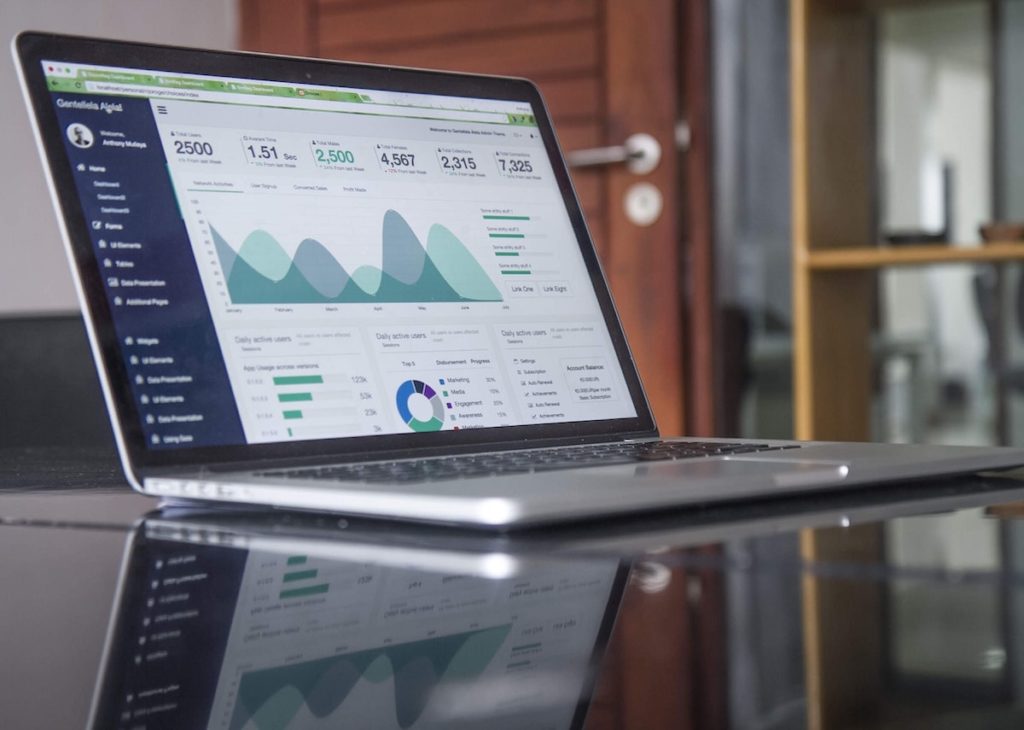
Business intelligence (BI) and data analytics tools pull disparate data sources into a single platform for enterprise data and BI teams to glean comprehensive insights from their organization’s information. These software solutions make it easier to visualize trends in customer purchases, failed business operations, or company cybersecurity. Enterprises should consider which data analytics features are the highest priorities for their team before deciding to implement a BI solution.
Best business intelligence software
| Built-in ETL capabilities | Predictive analytics | Free version | |
|---|---|---|---|
| Tableau | ❌ | ✅ | ❌ |
| Sisense | ✅ | ✅ | ❌ |
| Power BI | ✅ | ❌ | ✅ |
| Domo | ✅ | ✅ | ❌ |
| Dundas | ✅ | ✅ | ❌ |
Tableau

Tableau offers drag and drop visualization features and provides relatively inexperienced BI software users with an easy starting point; it’s simple to jump into Tableau even without extensive prior experience. However, Tableau does have extensive features, so learning to use it in depth might require more time. Tableau is also a good choice for data teams that have limited or no experience with programming or databases because many of its features don’t require coding.
Tableau doesn’t have native extract, transform, and load (ETL) operations, so data will need to be cleaned and pre-processed before analysis within Tableau. It also doesn’t work well with unstructured data, requiring a query language to parse.
Additionally, although Tableau is able to analyze large data sets, it can run slowly while doing so. Consider your business’s data processing needs before purchasing Tableau.
Tableau has no native data modeling capabilities. It’s one of the most popular visualization tools, but consider another data solution if your BI team needs extensive modeling features.
Considering a data modeling solution? Read Best Data Modeling Tools.
Sisense

Sisense has a containerized microservices architecture, which allows it to scale when enterprise data requirements increase. For example, when a high-performing application needs heavier analytics to parse large volumes of data, Sisense automatically uses more processing resources to analyze that data.
Through the containerized architecture, Sisense is also able to support auto-scaling environments like Amazon Elastic Kubernetes Service. Consider Sisense if your enterprise runs container services and needs to scale analytics for those platforms on demand.
Sisense has APIs for each endpoint, which allow users to customize both the front-end visuals and back-end security and monitoring of their applications. Enterprise data teams that want the opportunity to heavily change and develop their BI solution will benefit from Sisense’s customizability.
Note that some operations in Sisense require knowledge of languages like SQL or JavaScript. BI teams with no development experience may struggle with editing elements in Sisense. However, if your business’s data team members have a background in development, they may enjoy the opportunity to use the multiple programming languages supported by Sisense. The coding features are useful for teams that want to specifically customize analytics for their business applications and have the expertise to do so.
Power BI

Power BI offers data visualization features that teams can use to create detailed reports. Power BI Desktop also has a free version—smaller businesses with limited budgets will benefit from its free visualization and reporting capabilities.
Users can configure row-level security for data models imported into Power BI, which restricts other users’ access to certain rows of data. Note that row-level security doesn’t restrict data access for any users within a workspace, but for individual rows in models or datasets.
Power BI also offers data access monitoring, which helps businesses comply with the access requirements of regulatory standards.
Power BI consumes heavy amounts of RAM; ensure that your machines can handle processing large volumes of data before purchasing the solution.
Domo

Domo offers a feature called Stories for customizing dashboards; users can design the layout of their dashboard and add filters for viewers to apply. Users are also able to customize the layout with templates, drag and drop cards, and headers.
Stories are available on computer, tablet, and mobile interfaces. If your enterprise’s data team plans to make regular data presentations to executives or other business leaders, Domo may be a good choice.
Domo’s embedded analytics solution allows data teams to schedule automated reports and share dashboards and visualizations with the organization’s customers and partners. Partners are able to create their own visualizations using the available data. Domo is a good choice for businesses that regularly communicate with third parties and want to give them better access to analytics.
Some users experienced a learning curve when they first began using Domo; it might take time for data teams, especially inexperienced members, to learn. Additionally, Domo can be expensive for small businesses or companies on a budget.
Dundas

Dundas has open APIs and also connects to multiple data sources, including OLAP, relational databases, and text files. Consider Dundas if your enterprise needs to analyze data from many disparate sources or applications, particularly data living in text files and databases.
Dundas provides white-label analytics services, which allow businesses—specifically software providers—to customize their analytics to match their own company’s branding, giving their customers a unified brand experience. Dundas’s solutions for software vendors provide interactive dashboards and data preparation. Dundas is a programmable platform designed with developers and software providers in mind.
Dundas may be expensive for startups or very small businesses. Keep in mind that although its many features are beneficial for larger enterprises, they might be overwhelming for small companies or inexperienced BI teams.
What does BI software do?
BI tools use aggregated data from storage like databases, data warehouses, data lakes, and cloud storage solutions. They can also use APIs to draw data from business applications, like CRM, ERP, and collaboration tools. They provide insights about data that otherwise would be sitting in large quantities, siloed from other enterprise information. BI tools make data palatable for enterprises.
BI tools allow teams to create dashboards of distilled information. Dashboards include reports, charts, and graphs that help businesses visualize their data. They’re able to more clearly see when sales or production is improving or declining. Dashboards also give teams a reporting tool for presenting data to executives or other business leaders.
BI software alerts data teams when data significantly changes, in case something needs to be addressed immediately. Examples include a sudden drop in sales, strange website traffic numbers, or supply chain/shipping delays.
Some BI solutions also include predictive business analytics, which takes data from events that have already happened and uses that information to predict or prescribe what may happen later. Predictive analytics help businesses make preemptive decisions and avoid future problems.
Why use BI software?
Business intelligence software and analytics tools observe trends within data that would take a much longer time for human analysts to track. Although data teams are necessary to understand the full context of a potential problem or opportunity, they save significant manual work by letting a BI solution gather initial information, identify trends or anomalies, and present the data visually. BI tools speed and simplify the analytics process.
BI tools provide real-time reporting, so businesses can plan for rapid changes as well as long-term ones. Organizations will be less likely to experience disruption to an unexpected problem if they can identify and mitigate it earlier.
Overall, business intelligence is a resource for more reliable, data-based decisions. It serves BI and data teams by giving them a single location with data insights through charts, reports, and dashboards.
Choosing the right BI tool for your business
To select a business intelligence solution for your organization, consider the tools your company needs, the ideal deployment, compatibility with data sources, and how easy the BI software is to learn and use.
Critical features
Select a tool that offers the features your business and data team specifically need. You’ll likely need to look to the future and your data strategy in the next 5-10 years to find a tool that will fit the company’s growth, too.
Deployment options
Do you need a cloud deployment, an on-premises application, or a hybrid solution? Choose BI software with the deployment model your business needs.
Integrations
Choose a solution that integrates with all your current data sources or offers a way to do this manually (through an API or data transfer, for example). Your teams will need to pull all relevant data into the software for it to be accurate and effective.
Ease of use
Choose a tool with a learning curve that’s relative to the ability or experience of your team. Data teams with more experience will be better prepared to learn a more complicated, advanced solution. Consider what your organization plans to invest in the data team—for instance, giving employees time to get a Tableau certification.